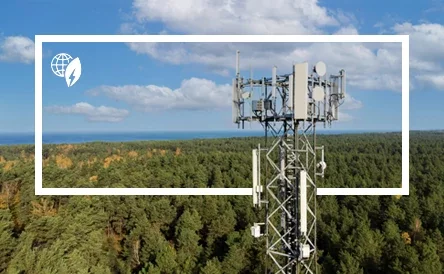
Why Edge Computing is Critical to our Connected Future
Decentralized computing is enabling important technologies for the sustainable and electrified world, but this equipment must be protected .
Edge computing is all about bringing connectivity and data storage closer to users. This increases the speed of data processing and reduces latency by reducing the distance data needs to travel for processing and storage. The rise of cloud computing is bringing efficiency and computing power to users in many applications—but for others, sending data back and forth to be processed in a large data center is unfeasible.
Cloud computing and edge computing both have pros and cons, and the correct choice depends on the application. Because data is stored and processed close to the user, edge computing can be used to lower latency and increase computing speed. This makes edge computing an important technology in any application where real-time insights and data are essential.
For instance, establishing edge computing technology in remote areas can help improve computing capabilities in those locations and lessen the load on centralized computing systems that could be overwhelmed or slowed down by a large amount of data traveling long distances. There are a wide variety of use cases for edge computing, including 5G expansion, industrial computing, autonomous vehicles, smart utilities grids, environmental monitoring and security systems.
Remote Applications, Unique Challenges
Think about an industrial environment where digital sensors and monitoring are used for safety purposes, a smart grid application where computers are controlling the flow of energy to and from a local community or an airport security system tracking people coming in and out of the terminal. In these kinds of applications, it is critical that systems process in real time. Latency or delays from data transfer or computing load could result in real consequences for the people that interact with and depend on those systems.
Edge computing is a critical part of our digitalized and connected future. Its unique properties can unlock exciting new technologies. However, edge computing also comes with challenges. One of the biggest challenges is the protection of data equipment. Because equipment for edge applications needs to be located where it is needed most, harsh environments often come with the territory. In industrial applications, equipment must be protected from high heat and high vibrations. In 5G or utilities applications, equipment is often exposed to elements including wind, rain, heat, cold and sand.
Cooling edge computing equipment also presents challenges. The data solutions industry has developed many innovative solutions for cooling large data centers. These controlled environments allow data center managers to deploy extremely efficient and effective cooling solutions. To get the most out of edge computing equipment, engineers are taking data center technology and figuring out how to apply it in the field alongside cooling solutions specially designed for the edge.
Watch: Edge Computing is Critical to Our Connected Future →
While it is imperative to physically protect edge computing equipment, it is also essential to ensure that data is protected from cyber threats. Operators need remote monitoring for environmental conditions, equipment status and access control. It is important that security protocols can be accessed remotely, and that monitoring technology can provide an audit trail of who has accessed equipment and any work they have performed.
Solutions for Security and Protection
nVent offers a wide range of solutions for edge computing that protect critical edge computing infrastructure from natural and manmade threats and maximize uptime. This includes the nVent HOFFMAN ProTek series cabinets, available in mild and stainless steel. These enclosures use dual hinge technology for easy equipment access and are rated to stand up to harsh conditions—including corrosive, wet, windy, or cold environments. They can be used in a wide variety of edge deployments including smart factory floor automation, security systems and 5G network deployment. The ProTek series also features integrated cooling for indoor or outdoor applications.
But for edge computing, physical protection is just the beginning. nVent also offers smart remote monitoring and control technologies like the nVent SCHROFF RackPower intelligent power distribution units (iPDUs). iPDUs allow personnel to remotely monitor and control power distribution to equipment deployed on the edge. Additionally, these products have integrated remote environmental and security monitoring, and environmental sensors that track temperature, humidity and leak detection.
Edge computing is a unique application that crosses industries, environments and applications, but a few things remain constant: the need for reliable protection, monitoring and security. Low-latency edge computing will continue to drive innovations in our sustainable and electrified world from safer industrial automation to 5G deployments around the globe. Regardless of application, nVent solutions can bring this critical protection and reliability to the edge where our customers need it most.